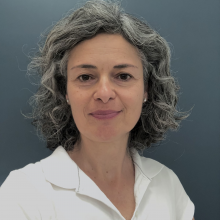Large bone defects are a major clinical and socioeconomic problem, as they negatively impact patients’ quality of life. Osteogenesis and vascularization are coupled during bone development and growth. In the bone marrow, endothelial progenitor cells form an osteoblast-vascular niche by close proximity to osteoprogenitor cells. Several studies have investigated the combined effect of osteogenic and angiogenic growth factors on differentiation of mesenchymal stem cells. However, the integration of a fully functional vascular network inside bone grafts remains a biological and engineering challenge. The general objective of V-BONE is to develop a multifunctional platform including (1) a porous scaffold frame, (2) angiogenic and osteogenic growth factors incorporated in hydrogel microspheres, and (3) mesenchymal stem cells from the bone marrow and Wharton’s jelly/or endothelium, to crosstalk in co-culture and promote the reconstruction of vascularized bone, which is crucial to treat large bone defects. To achieve this breakthrough in the field of tissue-engineered vascularized bone, in V-BONE we propose (i) to design, manufacture and characterize channeled porous scaffold frames based on natural and synthetic biomaterials, with tunable chemical, mechanical and architectural properties, and hydrogel microspheres for the encapsulation of angiogenic and osteogenic growth factors, inserted into the porous scaffold frame; (ii) to evaluate the angiogenic and osteogenic effectiveness in vitro in cell culture, and in vivo in mice. The multifunctional scaffold platform is expected to control the spatiotemporal release of growth factors and paracrine signaling factors that stimulate specific mesenchymal stem cell populations infiltrated inside the pores of the scaffold in co-culture, under dynamic conditions in a bioreactor. The cell-scaffold constructs will be translated to a GMP, high-scale production level.
Funding




